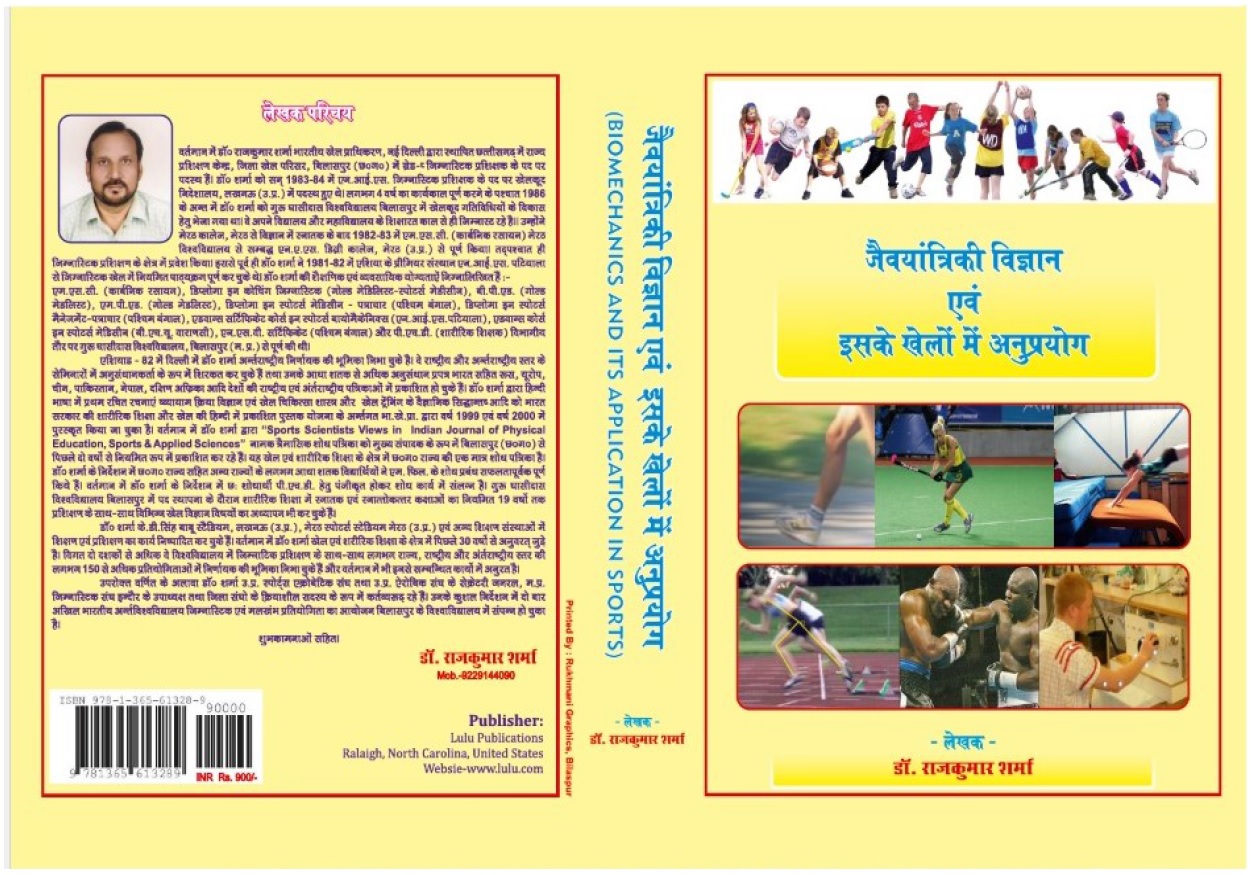| S.No. | Total View Count | Title of Manuscript | Page No | Download/ PDF |
|---|---|---|---|---|
| 1 | PHYSICAL ABILITY AND FITNESS TESTING AND MONITORING FOR COACHES, TALENT IDENTIFIERS AND DEVELOPERS: A DESCRIPTION ANDAPPLICATION ON A SOCCER ATHLETE Author: Fabrice Uwayo1 | 43-52 |  9 9 |
Article info
doi no.: 05-2016-44975451,
DOI Link :: https://doi-ds.org/doilink/08.2021-17458147/IJPESAS/05.2016-44975451/V11/I3/A6
AFFILIATIONS:
- M.Sc. Sports Management and Policy Development, Pan African University, Email: fabulossxx@gmail.com
Every sport has its own demands and these demands can be either physical, mental as well as social. Sports followers will always expect more from an athlete without, most of the times, considering the welfare of the athlete rather, always assuming that he or she is fit to bear their colors and keep or build their legacy. Sports administrators, managers and coaches need to understand what is necessary to do for a player to give his or her best as they must know the real reason behind players’ success or failure. It is in this regard that, to ensure regular and promising positive achievements, Player development has to be done strategically, purposefully and in a long term process of talent identification and development, respecting the development of all qualities expected from a strong and competent player on all aspects of physicality (Physical Fitness), mentality (Mental fitness) and keeping a positive social image (Social fitness). This article highlights the necessity of physical fitness testing and monitoring, with football taken as a reference, a highlight of basic fitness testing and monitoring practices that are easy to construct, use and assess. It is recommended that every fitness coach or talent identifier and developer chooses a specific test respecting the target physical aspect (Strength, Speed, Weight, Agility) and use a proper intensity measure with respect to age, gender, competition level and lifestyle of athletes. It is also recommended, as science improves, to pick an approved fitness test specific to a sport and remain up to date on improvement and changes that can be made on a certain test.
Key words: Fitness, Soccer, Athletes, Coaches, BMI, Talent, Physical ability.
References
Abbott, A., & Collins, D. (2002). A theoretical and empirical analysis of a ‘state of the art’talent identification model. High Ability Studies, 13(2).
Ayala, F., De-Ste-Croix, M., Baranda, P., & Santonja, F. (2012). Reliability and validity of sit-and-reach tests:Systematic review. Revista Andaluza de Medicina del Deporte, 5(2), 53-62.
Body Mass Index (BMI) – The Complete Guide. (2019). Retrieved from bmi cALCULATOR-iRELAND: https://bmicalculatorireland.com/
Chu, D. A. (1996). Explosive Power and Strength : Complex Training for Maximum Results. Champaign, United States.
García-Pinillos, F., Ruiz-Ariza, A., Moreno del Castillo, R., & Latorre-Román, P. Á. (2015). Impact of limited hamstring flexibility on vertical jump, kicking speed, sprint, and agility in young football players. Journal of sports sciences, 33(12), 1293-1297.
Getchell, B. (1979). Physical Fitness: A Way of Life, 2nd ed. New York: John Wiley and Sons, Inc., 1979. Retrieved from Topend Sports, Illinois Agility Test (IAT) N 1979.: https://www.topendsports.com/testing/tests/illinois.htm
Karakoç, B., Akalan, C., Alemdaro?lu, U., & Arslan, E. (2012). The Relationship Between the Yo-Yo Tests, Anaerobic Performance and Aerobic Performance in Young Soccer Players. J Hum Kinet., 35, 81–88.
Katharine, W., & Evelyn, D. (1952). The Sit and Reach—A Test of Back and Leg Flexibility. Retrieved from Taylor&Francis Online: https:// www. tandfonline. com/ doi/ abs/ 10.1080/10671188.1952.10761965?journalCode=urqe17
Lee, i. (2010). The Soccer (Football) 30 meter Sprint Test. Retrieved from Speed Endurance: http://speedendurance.com/2010/10/10/the-soccer-football-30-meter-sprint-test/
Lockie, R. G., Callaghan, S. J., Schultz, A., & Jeffriess, M. D. (2013). Reliability and Validity of a New Test of Change-of-Direction Speed for Field-. Journal of Sports Science & Medicine, 12, 88-96.
Lockie, R. G., Davis, D. L., Birmingham-Babauta, S. A., Beiley, M. D., Hurley, J. M., Stage, A. A., Lazar, A. (2016). Physiological Characteristics of Incoming Freshmen Field Players in a Men’s Division I Collegiate Soccer Team . Sports 2016, 4(2), 34.
Mackenzie, B. (1997). Sports Coach: Components of Fitness. Retrieved from brianmac.co.uk: https://www.brianmac.co.uk/conditon.htm
Mackenzie, B. (1999). Flying 30 metre Test. Retrieved from https:// www. brianmac. co.uk/ flying30.htm
Mitchell J, (2013). Talent Identification. Coach growth, Helping coaches to grow through the sharing of knowledge and ideas. https:// coach growth. wordpress. com/2013/10/05/ talent-identification/
Norton, K., & Olds, T. (2001). Morphological evolution of athletes over the 20th century. Sports Med. 31:763-783. .
Orchard, J., Marsden, J., Lord, S., & Garlick, D. (1997). Preseason Hamstring Muscle Weakness Associated with Hamstring Muscle Injury in Australian Footballers . The American Journal of Sports Medicine, 25(1), 81-85.
Physiopedia. (2021). Illinois Agility Test. Retrieved from https://www.physio-pedia.com/Illinois_Agility_Test
Sillero, B., Silva-Grigoletto, J., M, H. D., Montero, E. M., & del Castillo, G. M. (2015). Physical ability of the youth football players of a professional club. Revista Internacional de Medicina y Ciencias de la Actividad Fisica y del Deporte, 15(58), ISSN: 1577-0354.
Tancred, B. (1995). Key Methods of Sports Conditioning, The Athletic Coach. Retrieved from Brian Mac, Components of fitness: https://www.brianmac.co.uk/conditon.htm
Tollison, T. (n.d.). Illinois Agility Test. Retrieved from Elite Spoccer Conditioning (.com): http://www.elitesoccerconditioning.com/Testing/Illinoisagilitytest.htm
Williams, A. M., & Reilly, T. (2000). Talent identification and development in soccer. J Sports Sci, 18(9), 657-667.
Wisløff, U., Castagna, C., Helgerud, J., Jones, R., & Hoff, J. (2004). Strong correlation of maximal squat strength with sprint performance and vertical jump height in elite soccer players. . British journal of sports medicine, 38(3), , 285-288.
Vaeyens, R., Lenoir, M., Williams, A. M., & Philippaerts, R. M. (2008). Talent identification and development programs in sport: current models and future directions. Sports Med, 38(9), 703-714.
Yu, L., Altieri, C., Bird, S. P., Corcoran, G., & Gao, J. (2021). The Importance of In-Season Strength and Power Training in Football Athletes: A Brief Review and Recommendations. International Journal of Strength and Conditioning.
Zerf, M. (2017). Body composition versus body fat percentage as predictors of posture/balance control mobility and stability among football players under 21 years . Physical Education of Students e-ISSN 2308-7250, 96–102.
 admin@sportscientistsviews.com
admin@sportscientistsviews.com





